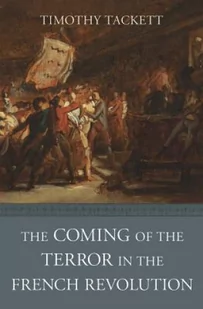Oferty
(1)Pozostałe oferty od najtańszej
Opis i specyfikacja
Between 1793 and 1794, thousands of French citizens were imprisoned and hundreds sent to the guillotine by a powerful dictatorship that claimed to be acting in the public interest. Only a few years earlier, revolutionaries had proclaimed a new era of tolerance, equal justice, and human rights. How and why did the French Revolutions lofty ideals of liberty, equality, and fraternity descend into violence and terror$1145 By attending to the role of emotions in propelling the Terror, Tackett steers a more nuanced course than many previous historians have managed. . . Imagined terrors, as. . . Tackett very usefully reminds us, can have even more political potency than real ones.
--David A. Bell, The Atlantic analyzes the mentalit of those who became terrorists in 18th-century France. . . In emphasizing weakness and uncertainty instead of fanatical strength as the driving force behind the Terror, . . . Tackett. . . contributes to an important realignment in the study of French history. . . .
